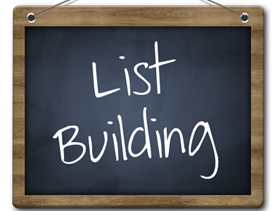It’s a new year, and you’re likely kicking off marketing and lead generation programs to drive more new leads for 2015. Most new leads go nowhere. Why? Often, it’s because Sales and Marketing have not agreed on a true lead definition and have not created a joint process for finding who’s ready to buy and building relationships with those who aren’t.
It’s not about more leads; it’s about doing better with the ones you already have. Here’s how. In this extended post, I’ll share some ideas on how to make your lead management more effective.
Create a marketing funnel, not just a sales funnel:
Most organizations don’t have a marketing funnel. Instead, they have a sales funnel that looks more like a bucket with lots of holes in it where leads leak out. Marketing needs to create its own funnel to understand whether leads are Sales ready or not.
The purpose of the marketing funnel is to bring leads into one spot and qualify them. By qualifying them, I mean that they are ready to talk to a salesperson. Then, there is the hand-off process between Marketing and Sales to consider.
I find that connecting the marketing and sales funnels together is really a big challenge and that is a big stopgap for most demand generation programs. You have to understand your sales process to know at what point the sales team views a lead as an opportunity and begins actively pursuing it.
The bigger and better you make your marketing pipeline, the bigger and better you make your sales pipeline. In the end, this isn’t about generating more leads; it’s about generating actionable leads. The marketing funnel creates sales-ready leads while nurturing the leads that aren’t sales-ready.
Cold Calling Can Be Fun:
The Cold Calling is the gold standard for qualifying most leads. We found that you can email, you can do Web profiling, you can measure all these touch points, but in the end if you want to know something, you need to talk to someone and engage them in conversation.
It’s not about more leads; it’s about doing better with the ones you already have. Here’s how. In this extended post, I’ll share some ideas on how to make your lead management more effective.
Create a marketing funnel, not just a sales funnel:
Most organizations don’t have a marketing funnel. Instead, they have a sales funnel that looks more like a bucket with lots of holes in it where leads leak out. Marketing needs to create its own funnel to understand whether leads are Sales ready or not.
The purpose of the marketing funnel is to bring leads into one spot and qualify them. By qualifying them, I mean that they are ready to talk to a salesperson. Then, there is the hand-off process between Marketing and Sales to consider.
I find that connecting the marketing and sales funnels together is really a big challenge and that is a big stopgap for most demand generation programs. You have to understand your sales process to know at what point the sales team views a lead as an opportunity and begins actively pursuing it.
The bigger and better you make your marketing pipeline, the bigger and better you make your sales pipeline. In the end, this isn’t about generating more leads; it’s about generating actionable leads. The marketing funnel creates sales-ready leads while nurturing the leads that aren’t sales-ready.
Cold Calling Can Be Fun:
The Cold Calling is the gold standard for qualifying most leads. We found that you can email, you can do Web profiling, you can measure all these touch points, but in the end if you want to know something, you need to talk to someone and engage them in conversation.
It’s a new year, and you’re likely kicking off marketing and lead generation
programs to drive more new leads for 2015. Most new leads go nowhere.
Why? Often, it’s because Sales and Marketing have not agreed on a true
lead definition and have not created a joint process for finding who’s
ready to buy and building relationships with those who aren’t.
It’s not about more leads; it’s about doing better with the ones you already have. Here’s how. In this extended post, I’ll share some ideas on how to make your lead management more effective.
- See more at: http://clientcurve.com/blog/?p=862#sthash.TT7jiGxO.dpuf
It’s not about more leads; it’s about doing better with the ones you already have. Here’s how. In this extended post, I’ll share some ideas on how to make your lead management more effective.
- See more at: http://clientcurve.com/blog/?p=862#sthash.TT7jiGxO.dpuf












